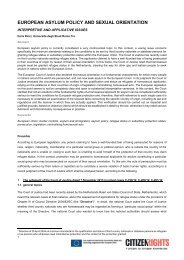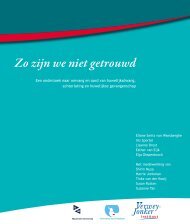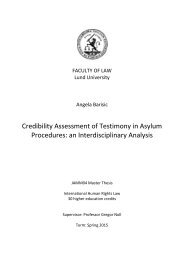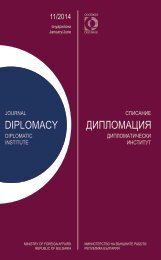AEMI
AEMI-2016-web
AEMI-2016-web
You also want an ePaper? Increase the reach of your titles
YUMPU automatically turns print PDFs into web optimized ePapers that Google loves.
SUSANA SABÍN-FERNÁNDEZ<br />
form including a declaration stating their<br />
will to send them there.<br />
In any case, between March and October<br />
1937 there were four official expeditions<br />
which transported a total of nearly<br />
3,000 children to the USSR. In June<br />
1937 there was an official evacuation of<br />
455 children to Mexico, known as the<br />
Niños de Morelia.<br />
Switzerland was of considerable interest<br />
as a safe haven for refugees. It seemed<br />
to be a perfect solution for relief effort<br />
owing to its neutral status and political<br />
stability. It was also acknowledged<br />
for having a distinguished history of an<br />
ethical approach to armed conflicts, as<br />
the Swiss were the pioneers of initiatives<br />
such as the Red Cross and the Geneva<br />
Convention.<br />
Despite some initial internal disagreements<br />
on whether to stay neutral or to<br />
provide help, the Swiss authorities in aid<br />
organizations established contacts with<br />
representatives of international groups<br />
and, in February 1937, the Swiss Committee<br />
to Aid Spanish Children was formally<br />
created. The committee was then<br />
renamed Swiss Aid.<br />
However, at this point something<br />
unexpected happened. Once the Swiss<br />
support had been officially offered, the<br />
Spanish Republican Government’s attitude<br />
changed and they started to lay a<br />
series of obstacles on the table. Consequently<br />
the project of taking a group of<br />
500 children to the Helvetic Federation<br />
did not materialize. Whatever the differences<br />
and the fruitless first attempts,<br />
once the international community<br />
became involved with the organized<br />
evacuations in the spring of 1937, Switzerland<br />
became part of the scheme and<br />
received a number of children.<br />
53<br />
There are large discrepancies regarding<br />
figures, and whilst some sources give<br />
an estimate of about 450 children in<br />
Switzerland, others practically double<br />
it, quoting two groups of approximately<br />
400 each. In any case this remains an<br />
under-researched topic that evidently<br />
requires further investigation.<br />
Denmark was one of the twenty-four<br />
countries which formed the International<br />
Commission for the Assistance of<br />
Child Refugees, previously named International<br />
Commission for the Assistance<br />
of Child Refugees. In 1937, the Committee<br />
for Children’s Spanish Sojourn in<br />
Denmark was conceived as a response to<br />
the appeal for help. The intention was<br />
to organize shelter for some 300 Spanish<br />
children with Danish families. The<br />
support for this particular venture was<br />
not nearly as massive as it had been for<br />
some previous relief action in relation<br />
to other conflicts, and it resulted in the<br />
small number of 122 Spanish children<br />
from the Basque Country, Cantabria<br />
and Asturias being taken to Denmark.<br />
However, despite the low number, the<br />
press dedicated some space to the children<br />
on a daily basis, and the campaign<br />
had popular support. These children<br />
travelled from France in two separate<br />
groups in September 1937 and they<br />
were not accommodated privately but<br />
in two colonies in Ordrup and Odense,<br />
near Copenhagen. After a few months<br />
there their presence became a rather<br />
controversial topic and in August 1938<br />
it was decided to send them back to<br />
France, where they would be supported<br />
with Danish funds in a mansion near<br />
Paris. There was also a colony subsidized<br />
by Danish funds in Catalonia before it<br />
fell to Franco.









